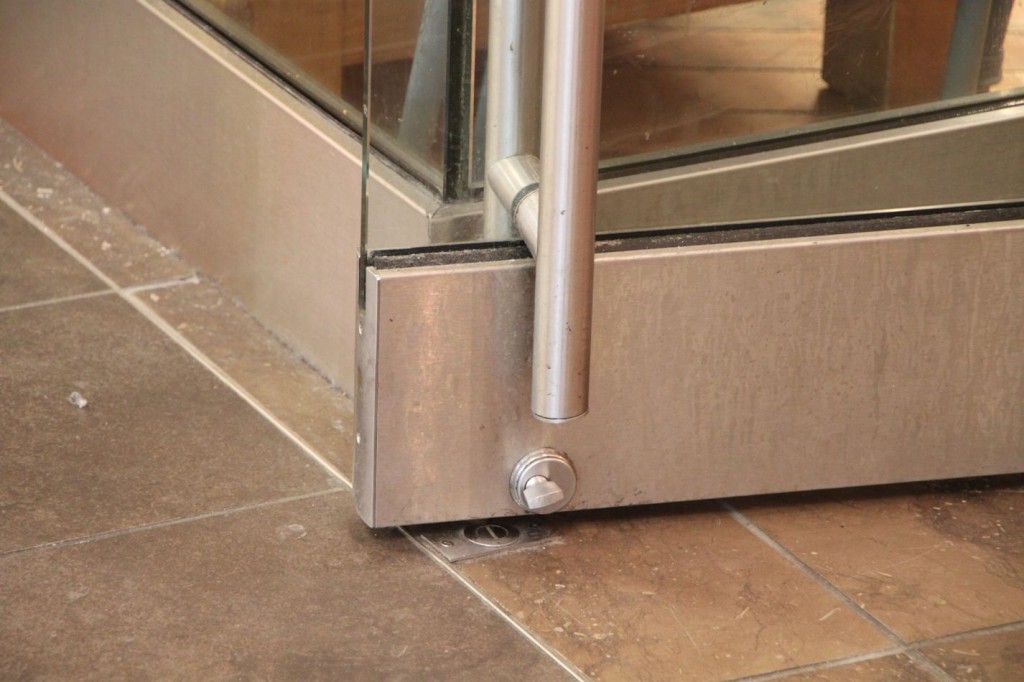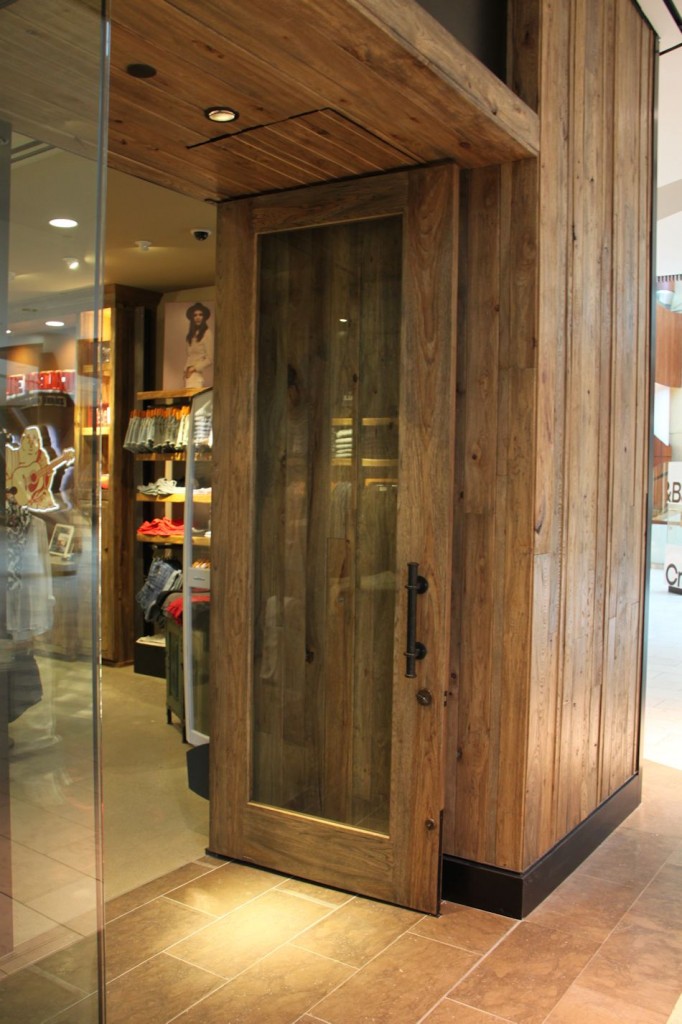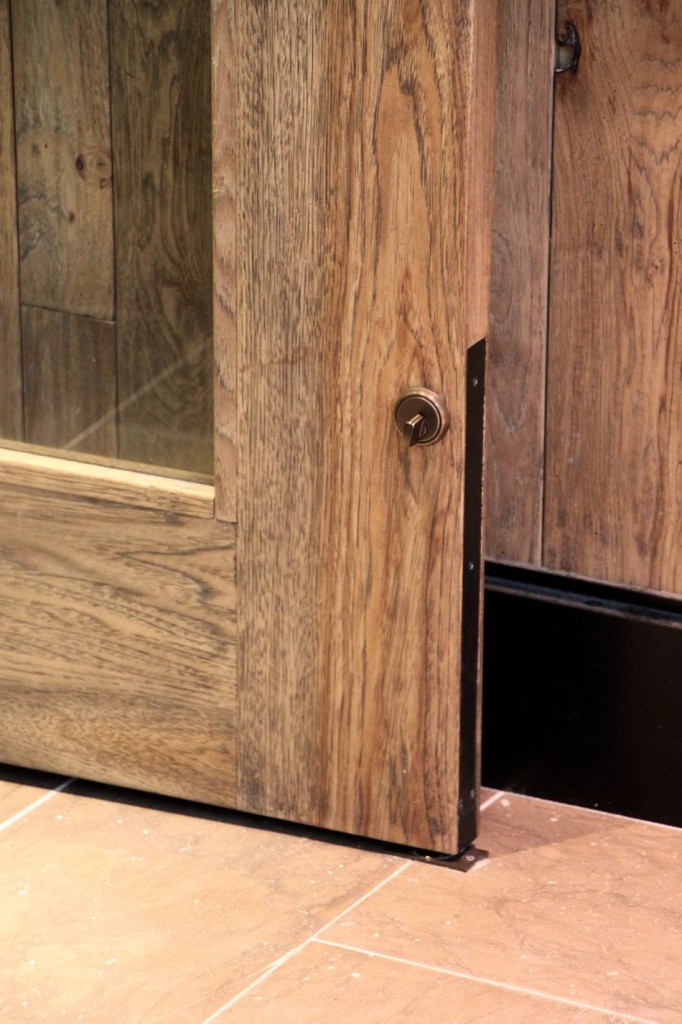I’m on the road today so this will be a quick post. I saw this application the other day, while I was taking photos for an upcoming article in Construction Specifier. The article covers several accessibility topics, including the requirement for a 10-inch smooth surface at the bottom of the push side of manual doors. I saw plenty of doors with protruding hardware in that 10-inch area, including this one with 3 problems – a bottom rail that is too narrow, a protruding full-height pull, and a protruding thumbturn for a bottom rail deadbolt.
Then I noticed the door below, which offers an alternative to a kick-down stop or other type of hold-open. This looks like a cylinder-operated deadbolt, with a thumbturn instead of the interior cylinder. The thumbturn is above the 10-inch height and does not impact the 10-inch smooth zone.
What do you think?
You need to login or register to bookmark/favorite this content.









Lori, for the thumb turn operated dead bolt for holding the door open, it seems that a manual flush bolt would have been an easier application. It appears as though they are not using the floor bolt to lock the door when closed.
I have done that before…I’m not sure why they went with this application instead of the standard flush bolt.
An elegant way to hold a door open. Let’s just hope that no one decides to put another strike plate in the threshold, and have the deadbolt do double-duty to hold the door closed, too.
I agree, a nice way to hold a door open for the public and not have it inadvertently taken out of hold-open. A little left-coast nuance: that ‘thumbturn’ cylinder would need to be the larger ‘turnlever’ design, and the cylinder height would need to be a minimum of 15″ above the floor. Presuming there’s a closer on the door, some authorities would raise the question of how a physically-challenged individual would contend with the door trying to close while operating the turnlever and lining-up with the floor strike.
Is there any leeway since this hold-open would only be initiated by an employee and not by the general public?
Actually I was thinking that it would be extra security if it did also lock in the closed position. Would that be a code problem?
Yes, the door would then require two operations to unlatch, and the thumbturn is too low and not of a shape that requires no tight grasping, tight pinching, or twisting of the wrist.
Bottom rail deadbolts are a popular application for both holding the door open and for locking the door, although as you mentioned, not ADA friendly.
Actually this raises a second question to me. I know it is always hard to tell in photos like these, but the second door photo–is that bottom rail 10″?
It looks like it may be 8″ (guessing since that is likely 6″ base next to it, the deadbolt may be mounted at the minimum 10″, and the overall scale of the door). In that case, isn’t this second door still an issue?
Wouldn’t the lip on this glass frame still be not considered a smooth surface?
Hi Adam –
I didn’t measure the stiles or rails, but next time I hit the mall I’ll bring my tape measure. The glass bead would have to be within 1/16″ of the same plane of the stiles and rails to be code-compliant.
– Lori
The key operated flushbolts is a CPTED strategy to deny concealment and provide better audibility to the space. It works well in restrooms and other concealed spaces (privacy and door ratings not withstanding) Used it many times.
please define/spell out what CPTED stands for.
Hi Ron –
CPTED is Crime Prevention Through Environmental Design.
– Lori
Thanks Lori. A keyed bottom flushbolt is intended to keep folks from closing the door. A sign on the interior side (shown only when the door is in a closed position) is also needed to make sure folks understand why the flushbolt is there.